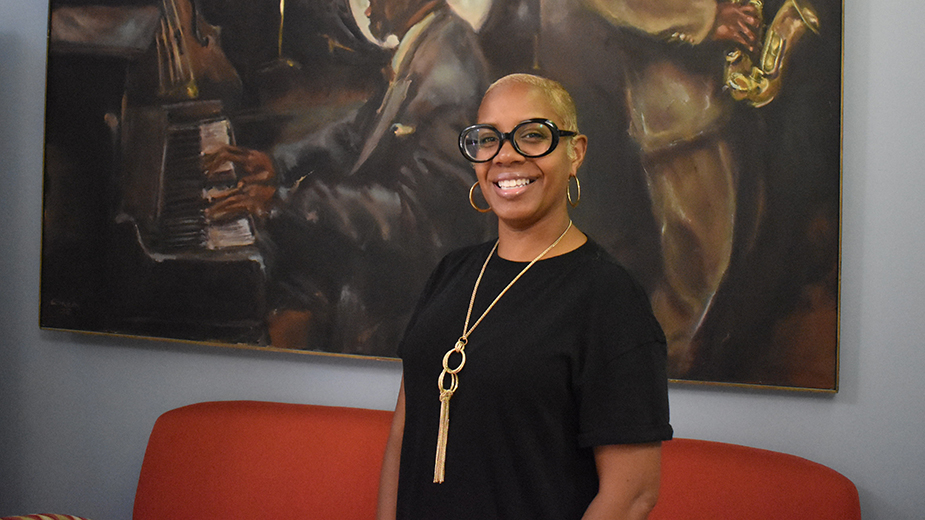Youngstown Names Gilchrist Economic Development Director
Youngstown Names Gilchrist Economic Development Director businessjournaldaily.com


Youngstown Selects Stephanie Gilchrist as Director of Economic Development

The city of Youngstown has chosen Stephanie Gilchrist as the new director of Economic Development. Gilchrist will be part of the Community Planning and Economic Development Department, led by Nikki Posterli, the chief of staff and CPED director. Her role will involve overseeing the economic development division.
Excitement for the Role and Focus on Supporting Small Businesses
Gilchrist expressed her enthusiasm for her new position, stating, “I am really excited to serve in this new role. I really do love the city and have been working with small businesses and entrepreneurs and want to make sure we support them.”
Gilchrist will be filling the position previously held by T. Sharon Woodberry, who left last year to pursue another development role in Florida. She will officially begin her new role on September 1.
Prior Experience and Building Relationships
As a former regional director of the Minority Business Assistance Center at the Youngstown Business Incubator, Gilchrist has developed valuable relationships that will benefit her in her new role. She emphasized the importance of engaging with business owners in the community to understand their needs and concerns.
Learning and Building Relationships
Gilchrist plans to spend the first six months of her new role familiarizing herself with Mayor Jamael Tito Brown’s administration and its goals for economic development. She will also explore opportunities to establish new relationships and prepare the city for entrepreneurs.
Past Achievements and Programs
Prior to her appointment as the director of Economic Development, Gilchrist held various roles at the Youngstown Business Incubator and Inspiring Minds Youngstown. She played a key role in overseeing a $5.7 million project and developed programs such as the Women in Entrepreneurship Program and the Youth in Entrepreneurship Program.
Personal Background and Education
Gilchrist, along with her husband, owns Ryan’s Chair Barber and Beauty Salon, which has been serving the community for over 25 years. She holds a Bachelor of Science degree in business administration from Youngstown State University and completed the Executive MBA program through Strayer University. Currently, she is enrolled in the Certified Business Advisor Program at Kent State University.
Recognition and Community Involvement
Gilchrist has been recognized for her contributions to the business community, receiving awards such as Youngstown Business and Professional Women – Business Woman of the Year and being honored by Youngstown State University as a Penguin Woman on the Move. She serves on the boards of the Autism Society of Mahoning Valley and Valley Economic Development Partners, as well as participating in various committees.
Pictured at top: Stephanie Gilchrist stands outside D.O.P.E. Cider House and Winery in Youngstown, where she participated in the Financial Freedom Through Entrepreneurship event in June.
Sustainable Development Goals (SDGs)
- SDG 8: Decent Work and Economic Growth
- SDG 10: Reduced Inequalities
- SDG 17: Partnerships for the Goals
Published by The Business Journal, Youngstown, Ohio.
SDGs, Targets, and Indicators Analysis
1. Which SDGs are addressed or connected to the issues highlighted in the article?
- SDG 8: Decent Work and Economic Growth
- SDG 10: Reduced Inequalities
- SDG 17: Partnerships for the Goals
The article discusses the appointment of Stephanie Gilchrist as the director of Economic Development for the city of Youngstown. This appointment is connected to SDG 8, which aims to promote sustained, inclusive, and sustainable economic growth, full and productive employment, and decent work for all. Gilchrist’s role in supporting small businesses and entrepreneurs aligns with this goal.
The article also mentions Gilchrist’s previous role as the regional director of the Minority Business Assistance Center, which assists businesses owned by minorities, women, and veterans. This is relevant to SDG 10, which focuses on reducing inequalities within and among countries.
Furthermore, Gilchrist’s emphasis on building relationships and partnerships with business owners and stakeholders in the community relates to SDG 17, which highlights the importance of partnerships for achieving sustainable development.
2. What specific targets under those SDGs can be identified based on the article’s content?
- Target 8.3: Promote development-oriented policies that support productive activities, decent job creation, entrepreneurship, creativity, and innovation.
- Target 10.3: Ensure equal opportunity and reduce inequalities of outcome, including by eliminating discriminatory laws, policies, and practices and promoting appropriate legislation, policies, and action in this regard.
- Target 17.16: Enhance the global partnership for sustainable development, complemented by multi-stakeholder partnerships that mobilize and share knowledge, expertise, technology, and financial resources.
The appointment of Stephanie Gilchrist as the director of Economic Development aligns with Target 8.3 under SDG 8. Her focus on supporting small businesses, entrepreneurs, and economic growth reflects the objective of promoting development-oriented policies that support productive activities, decent job creation, entrepreneurship, creativity, and innovation.
Gilchrist’s previous role as the regional director of the Minority Business Assistance Center also contributes to Target 10.3 under SDG 10. By assisting businesses owned by minorities, women, and veterans, she works towards reducing inequalities of outcome and ensuring equal opportunities for all.
The emphasis on building relationships and partnerships mentioned in the article relates to Target 17.16 under SDG 17. Gilchrist’s goal of collaborating with business owners and stakeholders aligns with the objective of enhancing the global partnership for sustainable development and mobilizing resources for sustainable development.
3. Are there any indicators mentioned or implied in the article that can be used to measure progress towards the identified targets?
- Indicator 8.3.1: Proportion of informal employment in non-agriculture employment, by sex.
- Indicator 10.3.1: Proportion of people who own a mobile phone, by sex.
- Indicator 17.16.1: Number of countries reporting progress in multi-stakeholder development effectiveness monitoring frameworks that support the achievement of the sustainable development goals.
The article does not explicitly mention any indicators related to the identified targets. However, progress towards Target 8.3 under SDG 8 can be measured using Indicator 8.3.1, which assesses the proportion of informal employment in non-agriculture employment, by sex. This indicator helps track the extent of decent job creation and the transition from informal to formal employment.
Indicator 10.3.1 can be used to measure progress towards Target 10.3 under SDG 10. This indicator focuses on the proportion of people who own a mobile phone, by sex. It provides insights into access to technology and digital inclusion, which are important factors in reducing inequalities.
Indicator 17.16.1 measures the number of countries reporting progress in multi-stakeholder development effectiveness monitoring frameworks that support the achievement of the sustainable development goals. This indicator reflects the level of engagement and collaboration among stakeholders in pursuing sustainable development goals, including partnerships for economic growth and reducing inequalities.
SDGs, Targets, and Indicators Table
| SDGs | Targets | Indicators |
|---|---|---|
| SDG 8: Decent Work and Economic Growth | Target 8.3: Promote development-oriented policies that support productive activities, decent job creation, entrepreneurship, creativity, and innovation. | Indicator 8.3.1: Proportion of informal employment in non-agriculture employment, by sex. |
| SDG 10: Reduced Inequalities | Target 10.3: Ensure equal opportunity and reduce inequalities of outcome, including by eliminating discriminatory laws, policies, and practices and promoting appropriate legislation, policies, and action in this regard. | Indicator 10.3.1: Proportion of people who own a mobile phone, by sex. |
| SDG 17: Partnerships for the Goals | Target 17.16: Enhance the global partnership for sustainable development, complemented by multi-stakeholder partnerships that mobilize and share knowledge, expertise, technology, and financial resources. | Indicator 17.16.1: Number of countries reporting progress in multi-stakeholder development effectiveness monitoring frameworks that support the achievement of the sustainable development goals. |
Behold! This splendid article springs forth from the wellspring of knowledge, shaped by a wondrous proprietary AI technology that delved into a vast ocean of data, illuminating the path towards the Sustainable Development Goals. Remember that all rights are reserved by SDG Investors LLC, empowering us to champion progress together.
Source: businessjournaldaily.com

Join us, as fellow seekers of change, on a transformative journey at https://sdgtalks.ai/welcome, where you can become a member and actively contribute to shaping a brighter future.







